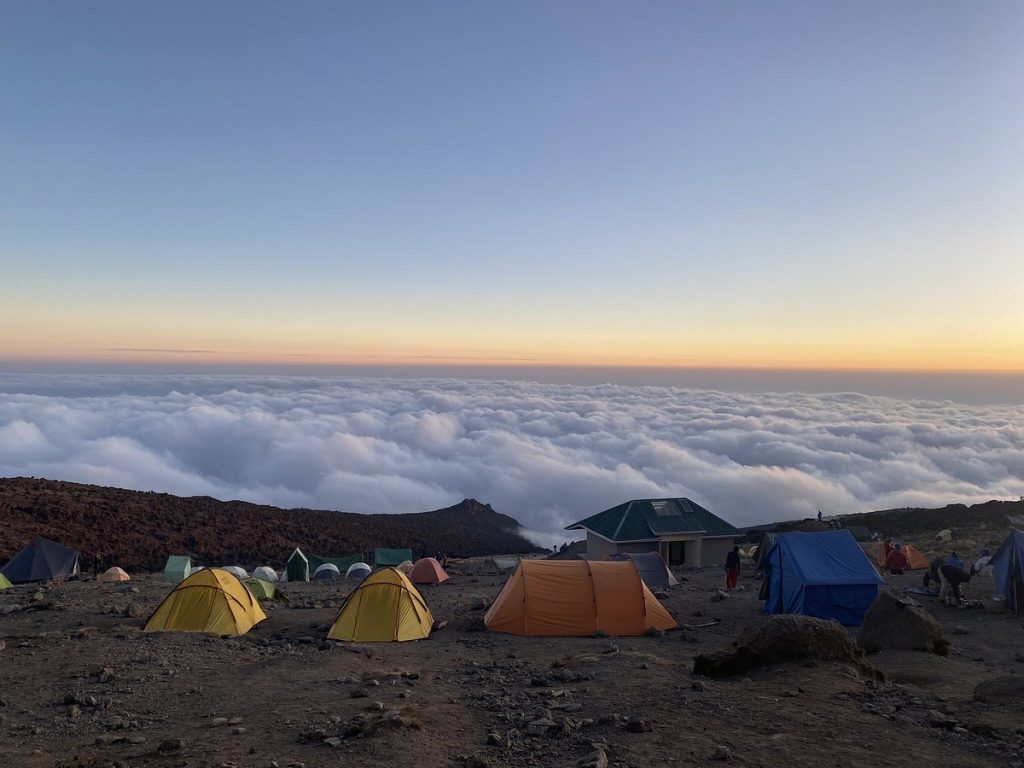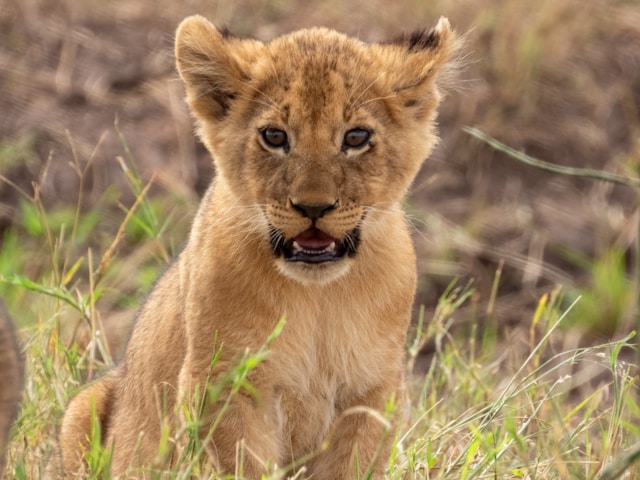Tanzania is unsurpassed for its magnificent scenery and wildlife experience. The world renowned Serengeti, the Ngorongoro Crater and the vast Selous – all names synonymous with some of the best game viewing experiences the continent has to offer. Over 25% of Tanzania is set aside for national parks and game reserves which harbour over 20% of Africa’s large mammal population. During the great migration Tanzania is home to over a million migrating wildebeest and zebra – one of the most dazzling wildlife spectacles on the planet.
The Serengeti National Park
Words cannot do justice to the vastness of the Serengeti, where you can see the earth’s curvature. Its fame comes from the dense population of animals and particularly the host of predators that stalk across the 14,800 square kilometres of grassy plains, which are broken only by small river valleys and rock kopjes.
For eight months of the year seemingly endless herds of over one million wildebeest, 200,000 zebra and 300,000 Thomson Gazelle’s swarm into the Serengeti, blanketing the plains. The extraordinary spectacle of the migration reaches its climax in February when wildebeest calving begins and both predators and scavengers reap their rewards. The western corridor, a narrow strip of dense vegetation, provides one of the biggest hurdles to the migration where, in search of fresh grass, they must cross the murky and crocodile infested Grumeti river en-route north to the Maasai Mara in Kenya.
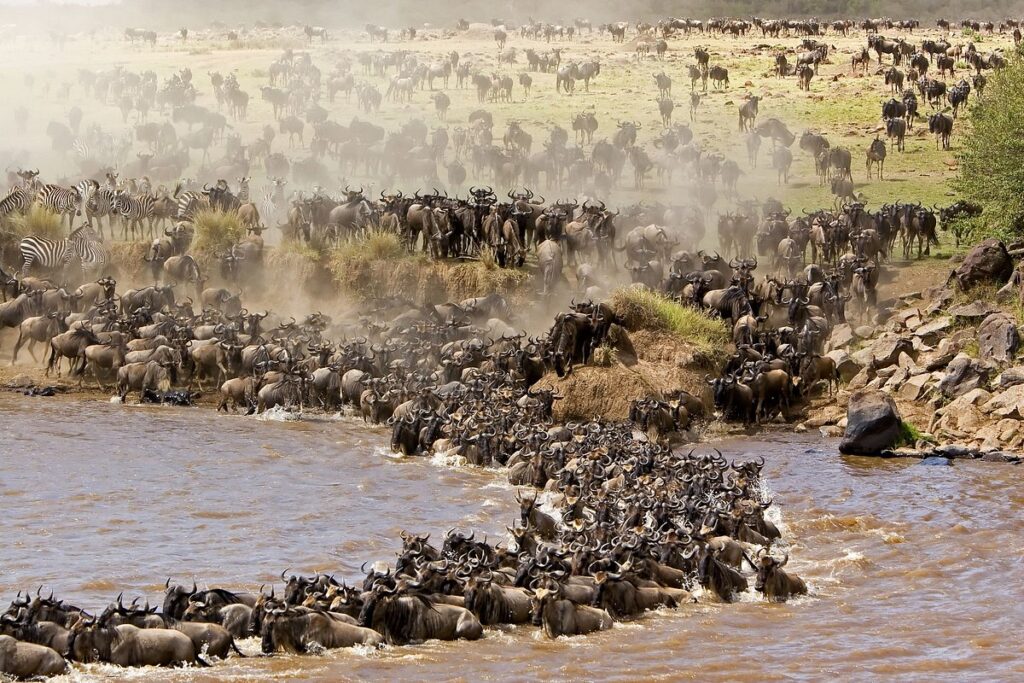
Ruaha National Park
In 2008 two neighbouring conservation areas were added to Ruaha National Park and its size now stands at a staggering 23,000 square kilometres.
This is Tanzania on a huge and very wild scale; it is very remote and far from any major towns with very few visitors and so offers one of the most private game viewing experiences in Africa. The landscape is rugged and harsh and offers great diversity from massive rocky hills and outcrops to thick dense impenetrable bush all the way to more open grasslands in the east; the most striking features are the numerous serpentine dry “sand rivers” which cross the park lined with dense cooling riverine vegetation where many animals take refuge.
Ruahas’ greatest secret lies in its extraordinary diversity of animals, plants and birds. Within the park as a whole there are over 1600 species of tree, twice as many as the great Selous Game Reserve which is also twice the size of Ruaha. There are a recorded 530 different species of birds, half of all Tanzania’s bird species may be glimpsed in this park making it one of the continents premier birding destinations. Among the mammals, the park possesses one of the largest species counts of large mammal of any other park. With all the regular animals such as elephant, huge herds of buffalo, giraffe, zebra, impala, eland, hippo, crocodile, lion and leopard, Ruaha holds a large amount of the rarer less seen creatures.
Nyerere National Park
The Nyerere National Park, a massive 50,000 square kilometres (four times the size of the Serengeti and bigger than Belgium or Switzerland) is wilderness on a huge scale. Although it is a seemingly infinite place, it has great subtlety.
Wildlife encounters are intimate and dreamlike; animals appear and disappear into the bush, and the scenery is breath-taking. This remote wilderness holds the continent’s largest populations of buffalo, elephant, hippo and crocodile as well as great numbers of lion, leopard, giraffe, roan antelope, giraffe, sable, eland and both greater and lesser kudu. It is also one of the last strongholds of the African Wild Dog – the second most endangered carnivore on our planet. Nyerere National Parkis fed by the mighty Rufiji River, the largest river in East Africa which drains most of South Western Tanzania’s water, this reserve is home to over 1,000,000 large animals and is home to over half of Tanzania’s elephant population.
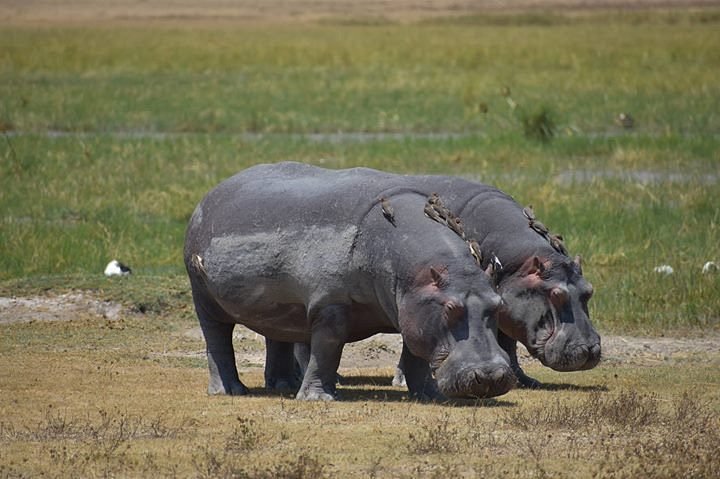
Ngorongoro Crater
Sometimes called the eighth natural wonder of the world, the Ngorongoro Crater is the largest intact crater in the world. About 2 million years ago the Ngorongoro volcano – then one of the tallest in the world – erupted, and its walls collapsed. The volcano floor sank to create a natural enclosure with walls over 600 metres high. Now, at over 19 kilometres wide, Ngorongoro Crater is the largest intact caldera (sunken volcano) in the world. Within the crater are great areas of acacia forest, hippo filled swamps and open grasslands. These different habitats contain over 30,000 animals – including the rare black rhinoceros and all the predatory cats, as well as magnificent birdlife. The Maasai can also be seen grazing their cattle alongside the buffalo, under the fixed gaze of the lions.
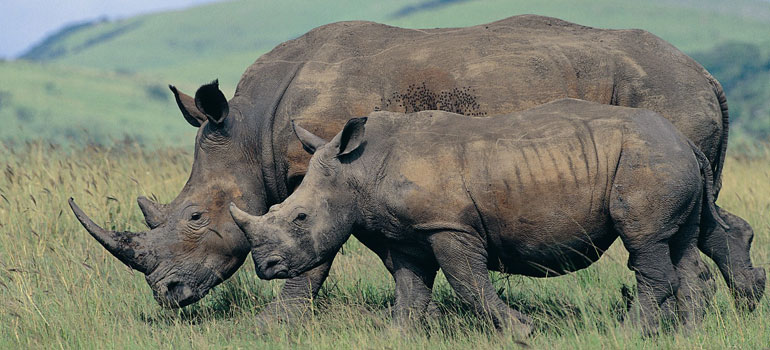
Katavi National Park
Katavi National Park is incredibly remote in Western Tanzania and is one of the greatest wildlife experiences of Africa. Miles from anywhere, it has an almost mythical status and, it is thought, a greater density of mammals than any other Tanzanian reserve. Massed on the vast floodplains are the last great herds of buffalo in East Africa, up to 1000 head. Rivers groan with hippopotamus, and crocodile. Almost everywhere you look there’s something grazing, bellowing, fighting, mating, hunting. Katavi can be wild beyond belief; this is a truly great game area.
Until recently you would find more people climbing Everest every year than visiting Katavi, and whilst visitor numbers have increased, visiting Katavi undoubtedly remains at the very pinnacle of safari experiences.
Mahale Mountains National Park
Tanzania’s Mahale Mountains National Park is on the shores of Lake Tanganyika and is extraordinarily beautiful. Thanks to Jane Goodall’s pioneering research in the 1960’s wild chimpanzees are habituated to humans and guided walks offer a good chance of encountering them. Accessible only by small aircraft Mahale is one of the best locations in the world to observe chimpanzees. Primate sightings are more numerous and more prolonged than anywhere else.
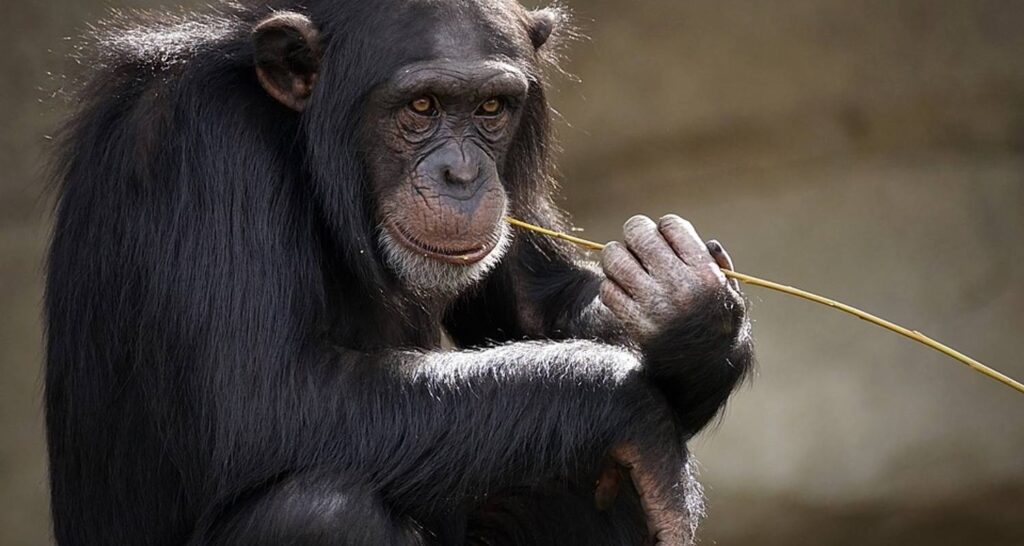
Chimp tracking is the chief attraction but hike the forest paths looking for birds and butterflies, as well as the other shy mammals who quietly live there, swim in ice-cold pools up in the mountain waterfalls, take a kayak out for a dawn paddle towards the middle of the lake; drink your morning coffee there and enjoy the sunrise coming up over the mountains, go for sundowners on the old wooden dhow, lazily following the shoreline and stopping to fish along the way, or just relax on the warm sands of the Zanzibar with a drink in hand; this really is one of those Once in a Lifetime Experiences.

